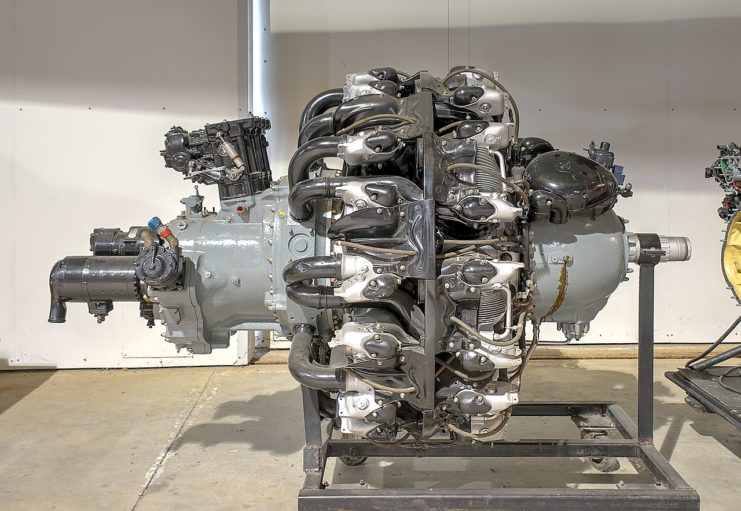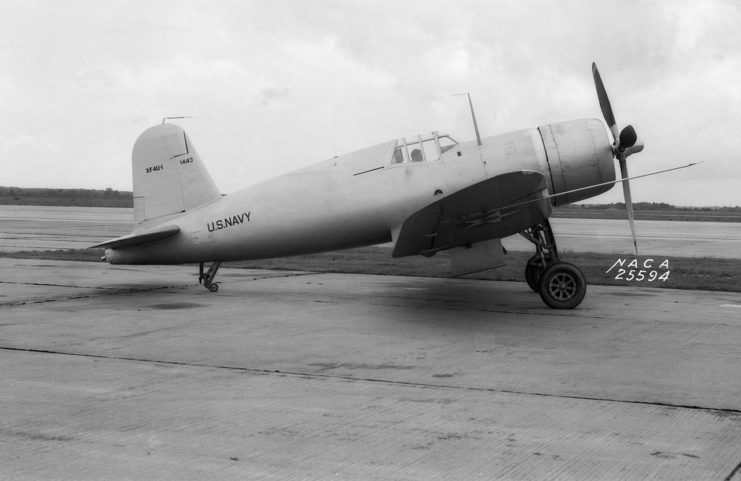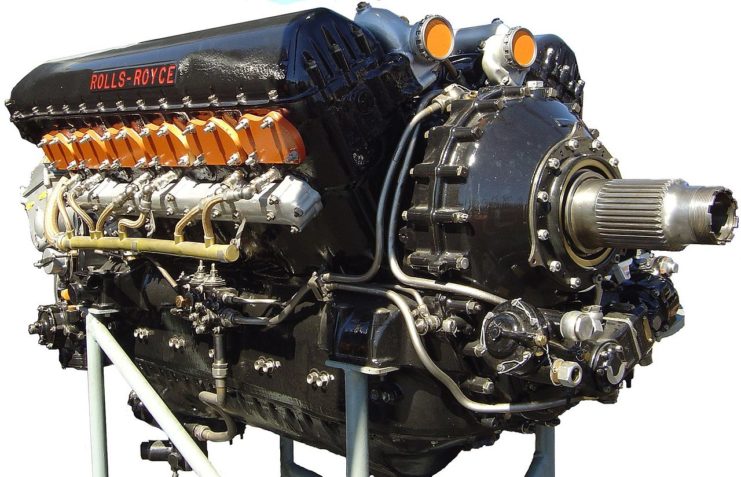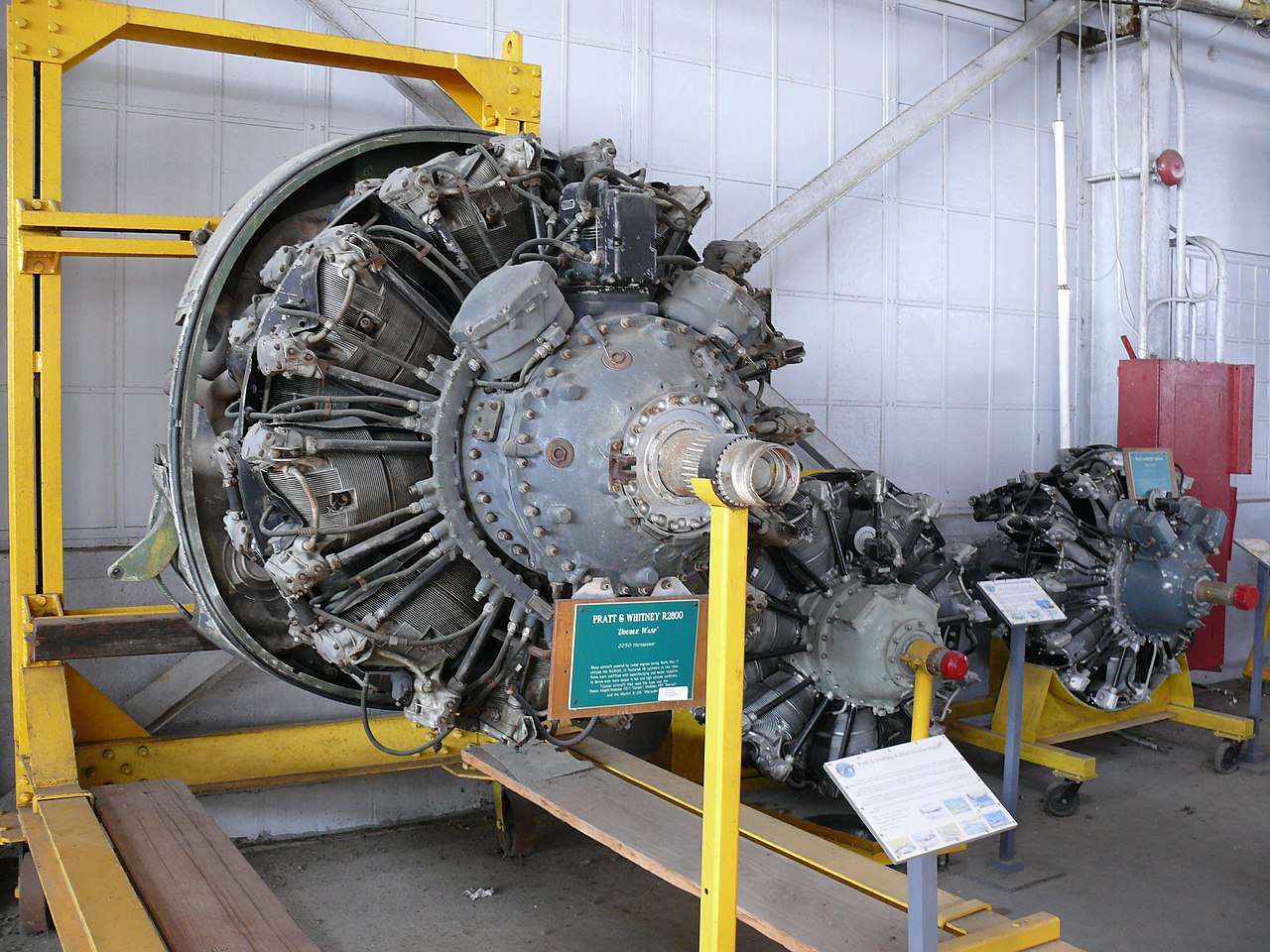In a previous article, we went over the Rolls-Royce Merlin engine’s incredible capabilities and its importance for the war effort during WWII. While it is easy to make the case that the Merlin was the most important aircraft engine of the war, the Pratt & Whitney R-2800 certainly deserves a mention. This engine was developed during the 1930s and when complete was one of the most powerful aircraft engines in the world. This reliable and easy-to-build engine was produced in staggering numbers and served in a huge range of some of WWII’s most famous aircraft.
Design

The R-2800 was a four-stroke air-cooled radial engine from the famous Wasp family. Radial engines have their pistons mounted in a circle around the crankshaft and are often simple, light, and have a good power to weight ratio. The basic design of the radial engine predates the aircraft itself, so when the R-2800 arrived the art of designing a powerful radial engine had mostly been perfected.
The development of the engine started in the 1930s. When it was first fired up in 1937, it immediately became one of the most powerful engines in the world.
Pratt & Whitney’s R-2800 was an 18 cylinder engine with a displacement of 46 liters. It was America’s first 18 cylinder radial engine and was smaller in displacement compared to other 18 cylinder designs. The cylinders were arranged in two “rows,” one behind the other, with each row containing nine cylinders. The name “Double Wasp” was derived from this layout.
To begin with, the R-2800 suffered from cooling problems, as it was relatively small in displacement for an 18 cylinder engine. Radial engines are usually air-cooled, so they need plenty of airflow over the cylinders to draw heat away from the engine. This is why aircraft powered by radial engines have wide, open engine cowlings, to enable this airflow. Cooling fins were cast or forged around the cylinder heads to present more surface area for the incoming air to draw heat from, giving radial engines their distinct frilly look.
However, because of the R-2800’s cooling issues, much thinner and more numerous cooling fins were needed. To achieve this, the fins were precisely machined straight out of the cylinder head material. This technique produced an intricate pattern over the cylinder heads.
On the front side of the engine was the propeller reduction gear housing, which contained the system of gears that reduced the propeller’s speed in relation to the engine. On top of this were the engine’s twin distributors.
When the engine reached operational status, it was already producing 2,000 hp. In comparison, the Merlin was “only” producing around 1,500 hp at the time. Naturally, the R-2800’s power output increased over the course of the war, reaching 2,400 hp by its end. But unlike many other engines designed at the time, the R-2800 was a very capable engine from the start, so later power gains were comparatively small. Experimental versions of the engine were able to achieve 2,800 hp.
Usage

The R-2800 was an extremely tough and reliable engine and eventually found itself powering an enormous amount of aircraft. For example, the R-2800 was used in the F4U Corsair, F6F Hellcat, F8F Bearcat, and the P-47 Thunderbolt.
In 1940, the XF4U-1 (the Corsair’s prototype), powered by the R-2800, became the first US fighter to exceed 400 mph.
It also saw service in a number of key US medium bombers, like the P-61 Black Widow, A-26 Invader, and the B-26 Marauder. But WWII was not the limit of the R-2800’s use. It continued on after the war in airliners and cargo aircraft like the C-69 Constellation and the DC-6.
Over 80 years since the R-2800 first run, it is still in use today around the globe.
The R-2800 versus the Merlin

The Merlin engine has ascended to almost mythical status since the war. This is not surprising, as it powered not only some of the wars best aircraft but also the most beloved. Aircraft like the Lancaster, Spitfire, P-51 Mustang, and Mosquito all used Rolls-Royce’s mighty engine.
With its gorgeously smooth V12 engine note and streamlined shape, the Merlin is a masterclass in elegance, performance, and practicality. In comparison, the R-2800 is an angry, chaotic spluttering mess, but one that gets the job done without fail.
The Merlin was much smaller than the R-2800 in almost every way; almost a third lighter and nearly half as wide. In addition, the Merlin was 27 liters in displacement, versus the R-2800’s 46 liters. But in exchange, the Merlin produced less power, mostly between 1,500 and 1,800 hp for wartime aircraft.
The Merlin provided dependable, predictable power even at high altitudes and thanks to its smaller frontal cross-section, aircraft using it could be more aerodynamic.
However, the Merlin was more expensive to build and much harder to work on. In the air, the Merlin was a reliable engine, but as a liquid-cooled design, it could easily be put out of action. Just a single bullet can cause a coolant leak and quickly lock the engine up. Even a simple hose failure could produce the same result.
Neither the Merlin nor the R-2800 were fuel-injected, so the engines suffered from fuel starvation during hard negative Gs.
As mentioned, the R-2800 is a rough and ready engine that can be abused and still get you home. As with most radial engines, just starting the R-2800 is a smokey and sputtering process, accompanied by the appropriate amount of loud backfires. Its rugged nature is inherent in air-cooled designs. Without a vulnerable liquid coolant supply, radial engines are much better suited for warzones.
Aircraft using this engine have returned home with entire cylinders shot off, but as long as the engine has a steady oil supply it will work. It was also simple to maintain, which is one of the reasons the US Navy favored this type of engine, as mechanics weren’t as well equipped as conventional air bases on land.
As with most military equipment comparisons picking a winner is like choosing apples and oranges; it’s mostly down to the situation at hand. On a thoroughbred high-performance fighter that needs to escort bombers from England to Germany and back? The Merlin would be the best choice.
On a carrier-based fighter that needs to be resistant against the salty corrosive air and requires minimal maintenance? Pratt & Whitney is the best choice.
Overall, the two engines proved to be excellent, long-lasting designs, that were worthy of representing the final stages of engine development before the arrival of the jet engine.
